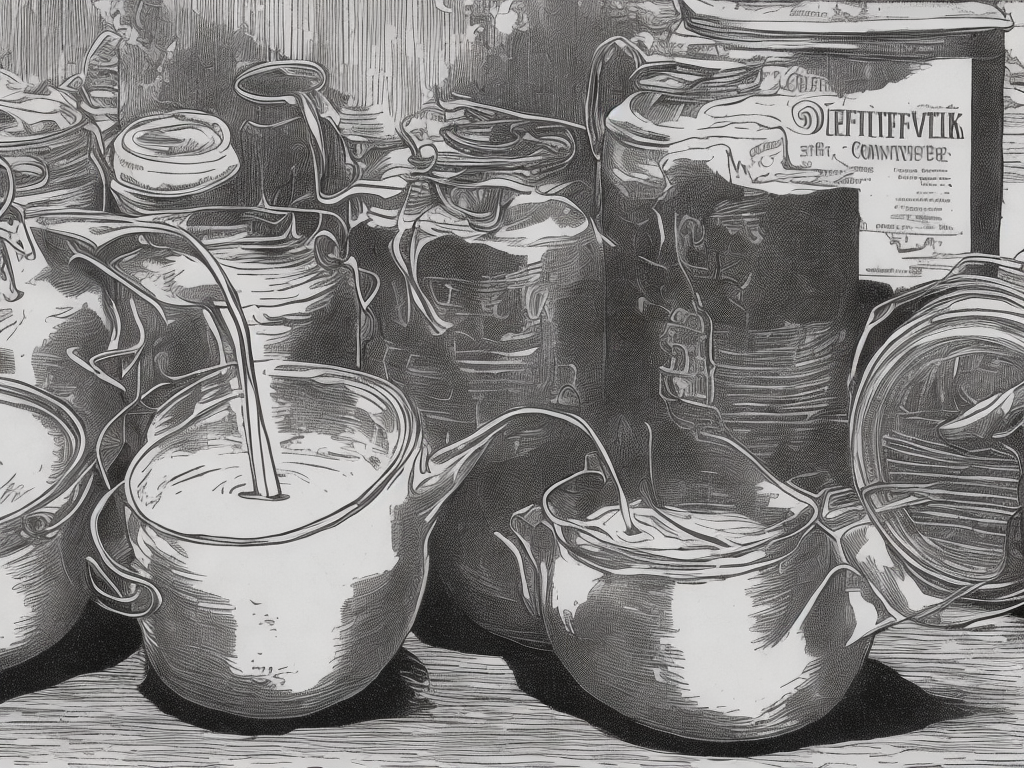
Difference Between Evaporated Milk And Condensed Milk
Milk is an essential ingredient in many recipes, ranging from baked goods to creamy soups and sauces. However, there are various types of milk available, each serving different purposes. Two popular types of milk that are often used interchangeably are evaporated milk and condensed milk. While they might seem similar, these two types of milk have significant differences in terms of taste, texture, and usage. In this article, we will explore the distinctions between evaporated milk and condensed milk to help you understand when and how to use them effectively in your cooking and baking endeavors.
Firstly, it is important to understand how evaporated milk and condensed milk are produced. Both these milks start with regular cow's milk, but they undergo different processes to achieve their distinct characteristics. Evaporated milk is made by heating fresh milk under a vacuum to remove around 60% of the water content. This process helps to concentrate the milk, leaving it with a slightly caramelized flavor and a thicker consistency compared to regular milk. On the other hand, condensed milk is made by adding sugar to evaporated milk, resulting in a thick, sweet, and creamy product.
The primary difference between evaporated milk and condensed milk lies in their sweetness. Condensed milk is much sweeter than evaporated milk due to the addition of sugar during the manufacturing process. This sweetness makes condensed milk a popular ingredient in desserts and sweet treats like fudge, caramel, and ice cream. On the contrary, evaporated milk has a mild, creamy taste with a slight caramelized note, making it a versatile ingredient that works well in both savory and sweet recipes.
Another key distinction between evaporated milk and condensed milk is their consistency and texture. Evaporated milk has a thicker and creamier texture compared to regular milk, thanks to the removal of a significant amount of water. This thickness makes it an excellent substitute for full-fat cream or half-and-half in recipes, lending a rich and creamy texture without the added fat. Evaporated milk also does not curdle easily when heated, making it an excellent choice for adding to hot beverages like coffee or tea.
Condensed milk, on the other hand, has a syrupy and sticky consistency due to the addition of sugar. This thick texture is ideal for use in recipes that require a sweet and dense filling, such as pies and bars. It can also be used as a topping for desserts or for sweetening tea and coffee. Due to its thickness, condensed milk cannot be substituted for evaporated milk in recipes that require a thinner consistency.
One important aspect to consider when using evaporated milk and condensed milk is their shelf life. Evaporated milk has a longer shelf life compared to condensed milk. Due to its reduced water content, evaporated milk can be stored at room temperature for several months without spoiling. However, once opened, it is essential to transfer any remaining evaporated milk to an airtight container and refrigerate it, as it can spoil if left at room temperature. On the other hand, condensed milk, due to its high sugar content, has a much longer shelf life. Unopened cans of condensed milk can be stored in a cool and dry place for up to a year. Once opened, condensed milk should be refrigerated and used within a few days.
In terms of usability in different recipes, evaporated milk and condensed milk have specific roles. Evaporated milk serves as a great substitute for regular milk, cream, or half-and-half in various recipes. It adds richness and creaminess to dishes without adding excessive fat. It is commonly used in soups, stews, sauces, and creamy desserts like custards and puddings. Evaporated milk can also be reconstituted with water to create a milk-like product when regular milk is not available.
On the other hand, condensed milk is mostly used in recipes that require sweetness and density. It is often combined with butter and sugar to create a rich and creamy caramel filling for pies or drizzled over cakes and pastries. It is also a key ingredient in making popular sweet treats like fudges, candies, and ice cream. Condensed milk can also be used to sweeten hot beverages or as a flavor enhancer in baking recipes.
In conclusion, while evaporated milk and condensed milk might appear similar, they have distinct differences in terms of taste, texture, shelf life, and usage. Evaporated milk is thicker and less sweet, making it suitable for savory and sweet recipes, acting as a good substitute for cream or half-and-half. On the other hand, condensed milk is much sweeter and thicker, making it ideal for desserts, condensing sweetness, and adding a dense texture. Understanding these differences will enable you to make informed choices when using these milk products in your culinary endeavors.
 Self-Instruct
Self-Instruct